When Mass Effect New Earth opened at California’s Great America two years ago in May 2016, several aspects of the attraction made it unique. The ride was one of the first ever to be based on a video game franchise. It features cutting edge visual technology, including the largest 3D LED screen ever installed in an attraction (and it remains the sharpest 3D I’ve ever seen). The audio systems uses advanced “binaural” systems to add lifelike directionality to sound effects. But with all this technology, the thing that made it stand out the most to me was the inclusion of a live actor as the guide through the primarily digital ride.
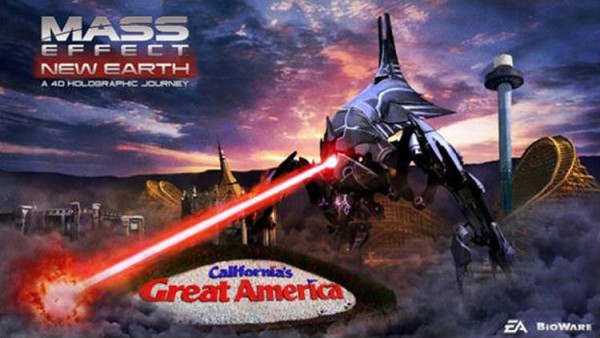
While there are rides that include live performers, especially at the major destination parks like Disneyland or Universal, they often aren’t in the middle of the action or performing as specific character. They’re more like ride operators who provide narration. In Mass Effect New Earth, though, the live actor plays the role of Conrad Verner, a comedic recurring character from the game series. He is someone who has an established background that fans of the game are already familiar with. The actor has to perform by themselves against the backdrop of visual effects and 3D characters. This adds an additional challenge to the performance.
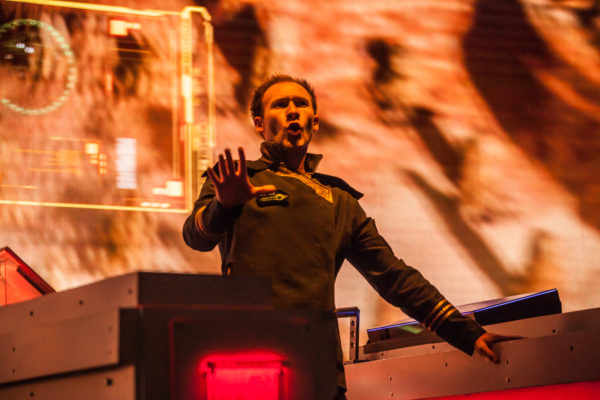
Brian Miller in the role of Conrad Verner. Photo Courtesy of California’s Great America
To learn more about how this unique position in the amusement park world works, the challenges of the role, and some secrets behind Mass Effect New Earth’s Conrad Verners, we chatted with Brian Miller, Entertainment Production Coordinator for California’s Great America. Brian was largely in charge of creating the Conrad Verner role. He directs and trains the performers, and was involved in the development of the action. He has also performed the role himself over a hundred times (at least).
Note: There are some spoilers for the ride in the interview. So, if you haven’t ridden Mass Effect New Earth and really want to experience the show fresh, pause here, get over to CGA and ride it, then come back.
“Somehow, now this is what I do.”
Coaster101: Thanks very much for talking to us Brian! Can you give us a little bit of your background with the park before Mass Effect?
Brian Miller: I started here back in 2009, so I’ve been here almost a decade. I started for Halloween Haunt, just as a monster. Then the following year was the first year that Great America had the peanuts characters, and I was the inaugural host with them. After that I kept performing in different shows. I was a stage manager for a season, and since then I’ve bounced around and done all sorts of different things, and, somehow, now this is what I do.
C101: When Mass Effect was in development and first opened, were you the lead on that right away?
BM: Yeah, the entertainment manager had called me in for a meeting and said, ‘hey, we want you to work on this project.’ Originally I was just sort of going to be a director of performance, but because I knew it the best I ended up also performing the role quite a bit. I came in later on the project, so when I started they had already developed the majority of the concept. I ended up making a couple of adjustments to script things, mostly like where a word didn’t fit into the timing. Then, along with the other people that worked on the attraction, I built most of the blocking and figured out how the interactions with the screen worked.
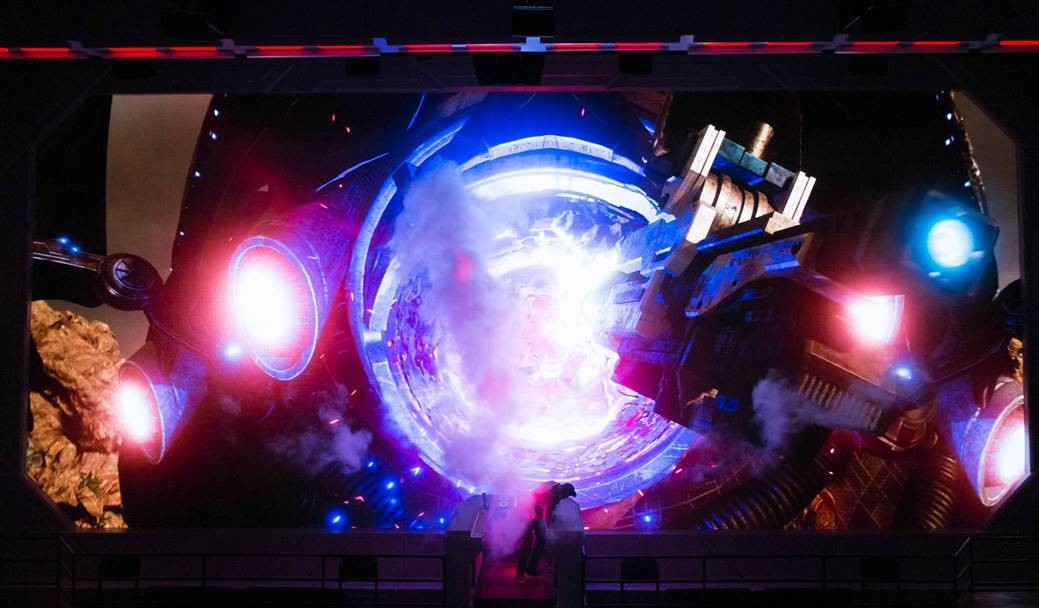
Photo Courtesy of California’s Great America
C101: Were you at all familiar with the Mass Effect Universe before the attraction? Had you played any of the games or heard of them?
BM: I had heard of them. One of my close friends was WAY into Mass Effect, and so that was cool because we were talking about I was working on this project and they were so excited. They loaned me their system and I played a lot of the games. I also did a lot of research into what the jokes in the game are and the tone, that kind of thing.
C101: When developing the role, how closely did you work with other project developers to figure out how to make it work when it was all put together?
BM: There was a chunk of time where we started rehearsal before the attraction was completed, not really sure how it was going to all fit together. Once we finally got the (ride) up and running, we were there and were doing rehearsals and getting notes from people. It was a big collaboration and a lot of people were involved in making tweaks to it.
“You can’t do an entire day of Mass Effect straight through, because you’re going to explode.”
C101: How many different Mass Effect Captains do you have? Is it the same group of people throughout the entire season?
BM: For preseason (March, April, May, before the summer season), we usually have 4 or 5 captains that we’ll use. If you’re a captain you can’t do an entire day of Mass Effect straight through, because you’re going to explode. So what we do is we switch off back and forth. One captain will do four cycles, and then the next captain will do four cycles, and they go back and forth. Then somewhere in the middle of the day another one will come in so that they can get breaks. For a full 10AM – 10PM day of operations you can have up to six captains working, but not all at the same time.
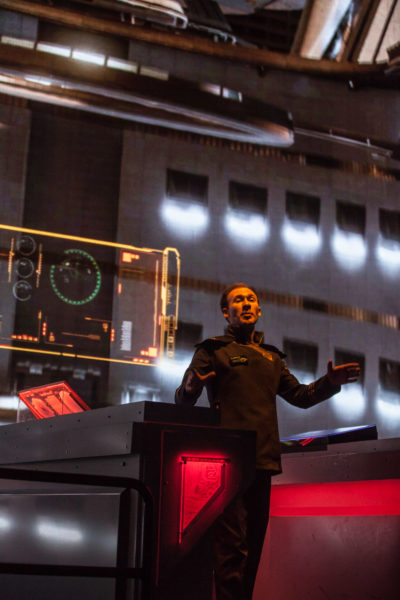
Photo Courtesy of California’s Great America
C101: With performing the ride so many times in a day and all season, how do you try to keep the role from getting exhausting or repetitive?
BM: Yeah, I mean, it absolutely is repetitive. I think it’s a testament to the actors. They have to keep it fresh so they do whatever they need to do, and, really, the audience helps.
On one extreme you can do an amazing show where you put all of yourself into it, but then you’re dead tired by the end. Then you can also do a show all the way on the extreme, and we usually don’t get over here, where it’s complete rote. It’s “here are the lines, I’m saying them.” We aim for somewhere in the middle of that, so it’s a good consistent performance that isn’t going to tire them out and it’s still entertaining. If you have people who are excited to watch you then it’s not a problem. If you have a full house you’re more likely to have a good show.

Brian interacting with a non-existent 3D display in Mass Effect: New Earth. Photo Courtesy of California’s Great America
“That’s your chunk of time where you shine…”
C101: Has the script or directing changed at all over the two years as you’ve had more experience with it?
BM: All of the performers who work on it, it’s like a team. They’re the captains and everybody is in it together. There’s a small chunk of time in the opening where you get to play with the role a little bit and have some interaction with the audience. So, if you have a crowd that’s into it and excited, you can stretch it a little bit. Early on, the performers took a little bit too much liberty, and the ride operators were like “hey, we have to start the cycle at some point.” The performer is actually the person who cues the ride to start.
C101: How much of the script is open to that kind of ad-libbing?
BM: I’ve chunked the ride into three sort of acts, if you will. The first chunk of it is mostly a dialogue with Conrad and the audience, and a little screen stuff. That’s all the way up until you launch through the relay, basically. That’s your chunk of time where you shine and the focus is more on you.
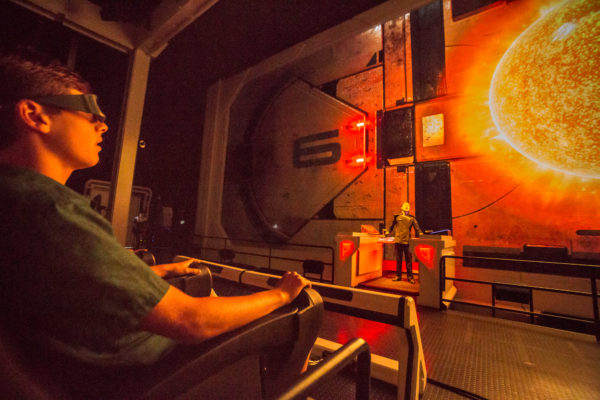
Early in Mass Effect is the chance for the actors to improvise a little more and interact with the audience.
The middle section, is a little bit the actor, but more screen. Then once you get into the third act, the battle with the Reaper, it’s not about the actor at all. I tell them, “you’re there, and you’re doing this stuff, but they’re watching the screen.”
Throughout the script there are a couple of moments where there’s not a set line that you have to say. So we have a couple of different jokes that we throw into places. And, like during the battle when you’re fighting the Reaper, there are some exclamations that you can really fill in whatever you want there as long as they fit in with the theme.
Over time everybody steals from everybody else whatever the funniest things are. So everybody’s doing one bit at the same time, and then later in the season everybody’s doing a different bit in the same place (when someone comes up with something new). An example of that, I went in and hadn’t performed it for like 2 months. I did the things that I normally do, and the other guys all said ‘What is that?!’ They’d already moved on to a new thing.
But, the overall structure is set, there are timings that you have to fit your lines into, there are movements you have to do, and the story is set.
C101: You mentioned in the third act the focus is really the on-screen action. What do the actors try to do in that section to get into it?
BM: If you watch the actor during that third section they’re doing a lot. The first time you’re not going to see the actor at all in that third section, but after you’ve ridden it three or four times, you’ll notice and say “hey, they’re doing something interesting there!”
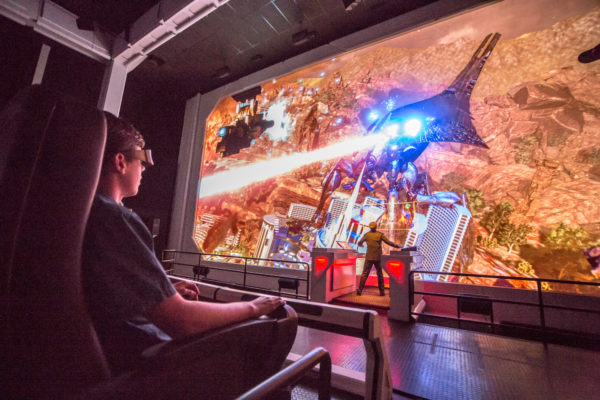
During the big battle sequence in the final section of the ride, guests don’t pay much attention to Conrad, but they might be doing some exciting physical acting. Photo Courtesy of California’s Great America
“The tree hit you again. You have to duck.”
C101: That is one of most impressive things about the performance to me; the ability of the actors to interact physically with things that aren’t actually there. How did you figure out how to direct and block all of that and interact with the screen?
BM: 3D-Live was the company that was one of the biggest developers of the screen technology, and they had experience with using live performers with their screen. They did a project for the opening of Inside-Out that had the screen and live dancers in front of it. They’d figured out how live actors need to move in front of the screen to some degree. That was really helpful, and then we figured out a lot of it when we were there (on set).
C101: How much of that physical action is directed ahead vs improvised on the fly by the performers?
BM: It’s basically choreography. I spent time with each person, and each person is different. Some actors are more physically inclined and they just get it. And some are more verbally inclined so we work more on the physical. One interesting thing, if we’re in a spaceship and it leans to the left all the way, technically the people in there would go to the right. So we looked at how to do that when we were developing it, and the easiest cue ended up being that the actor moves along with the chairs. That’s what I tell the actors if they’re not sure which way to fall. “Whatever the chairs do, you do, and it’ll make sense to the audience.”
Then the other thing with the 3D-ness of the screen, is that to the actors just a flat screen. So we’ve blocked them because things are popped out to the audience. So like Garrus and Wrex (two of the digital characters) are popped out of the screen, but the actors have to look at nothing directly to their side.
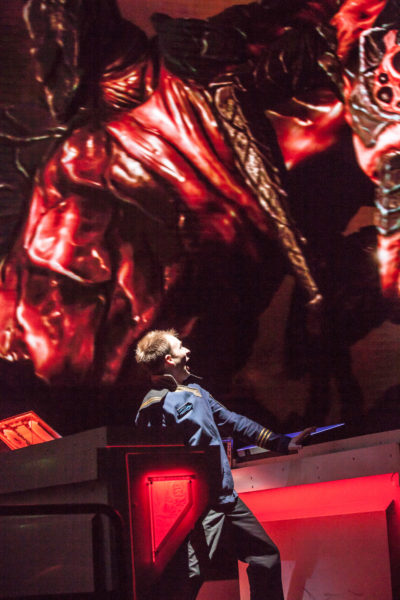
Brian looking at, and reacting to, nothing. At least from his perspective. Photo Courtesy of California’s Great America
C101: That seems like something that would be really challenging or take a while to get used to.
BM: Yeah, you use your peripheral vision to make sure you’re looking basically in the right direction, but it’s definitely a trip. The other time that really happens is when the tree pops out and it’s on top of you. The note that I give the most to new Conrads is, “The tree hit you again. You have to duck.”
“You just sometimes have to ramble.”
C101: Earlier you mentioned that the actor cues the start of the ride, can you expand on that a bit?
BM: Yeah, so at the beginning you welcome everybody in. It’s funny, if your ride operators are new and haven’t quite gotten it down yet, then you have to speak for a longer amount of time. You’re filling time while the ride operators are doing checks and making sure bags are out of the way and such. The cue (for the operators) to press start on the ride is when you say “Commander Shepard”. There’s a delay after you say that line until Avena (one of the digital characters) interrupts you. You have to time it so that you have enough time to finish your line before the interruption, but if the person operating the ride isn’t right on cue then sometimes you trail off for a little bit.
The whole line is, “I have it on good Authority that the famous Commander Sheppard was once seen outside this very ship…” and that’s where Avena is supposed to interrupt you. So sometimes you’re like “yep, Commander Shepard. I was there, I saw it. Some people don’t believe me but it’s true.” You just sometimes have to ramble.
I should say that (the ride operators) are really good, though.
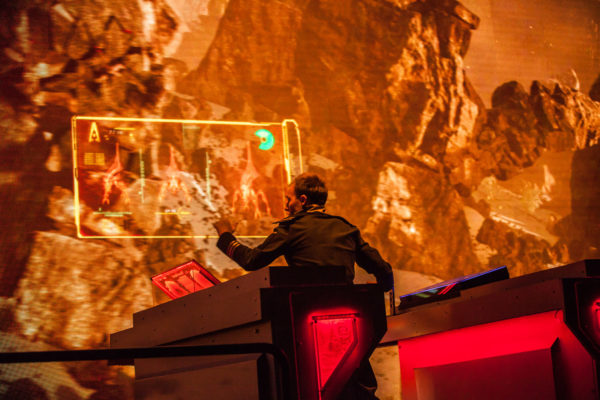
Photo Courtesy of California’s Great America
C101: Are there any other sort of “behind the scenes” things or favorite sections of yours that you’d like to highlight?
BM: One of the cool things of the show is that you have CO2 cannons, and there’s one that’s right underneath the actor. They don’t run the CO2 every show (for safety reasons), but the actor gets blasted like right underneath themselves. It’s hilarious to watch people on their first time with the CO2.
The other little thing that you might not have noticed, there are LED light fixtures that are focused down from in front of the truss piece in front of the actor. They change color depending on what is happening during the ride. At one point, for example, when there are bugs flying through the air, it changes colors based on the bugs. So it makes the actors color match the screen colors.
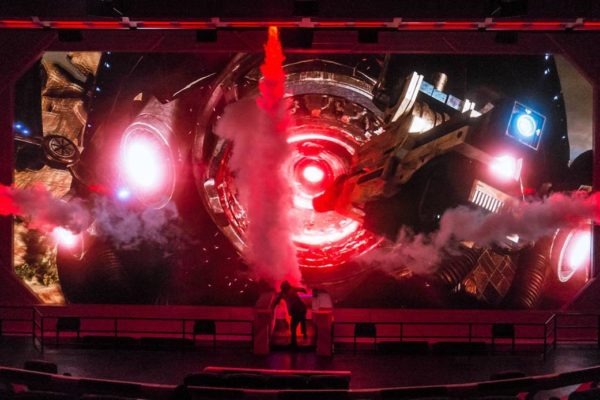
Blasts of CO2. Plus note the LED illuminating Conrad to match the color from the screen. Photo Courtesy of California’s Great America
Oh, I know what else, sometimes when you do it over and over, you lose track of how many times you’ve done it. So, last season we built what we call the “Conrad-o-meter”. There’s one that’s in the break area, and on-stage there’s a little one too that’s just like a lazy Susan. It has a one, two, three, four, and you just rotate it at some point in your show, and then you can keep track of how many you’ve done. Then you can say “now I’ve done four and I’m good.”
C101: I’ll have to definitely try to find that next time I’m riding! Do you guys track who has done the most cycles over the course of a whole season?
BM: So the first season I built a sheet to keep track of it, and we’d do tallies to see how many people have done. But, it ended up interfering with the change over time for the Conrads, so we had to stop doing it because we were delaying cycles tracking it. I’ve done I’m sure more than a hundred, and some of the other performers who worked a lot this last summer have definitely done more than a hundred, two hundred, I mean tons, tons. And I pop in to watch and give notes every once in awhile, and so do different members of the entertainment staff. They will pop by and just check on quality.
C101: How do you compare performing in an attraction like this to the live shows or events?
BM: It’s absolutely on par with the other things we do at the park. I think the coolest thing about it is we could have just said, “Ok, we’re going to hire ride operators and train them to be Conrads.” But we don’t do that; we audition the role and we hire people who are performers. And, a lot of the times they’re fans of the games. That really makes a big difference. The first season we had a couple Conrads who were such big fans of the game, they know the whole universe and they can pull stuff out and reference it. I think that’s really cool. But yeah, we really work to keep it consistently good with the performers. Even if we’re hiring people from last year, they have to go through training again to make sure that they stay up to the standards that we set.
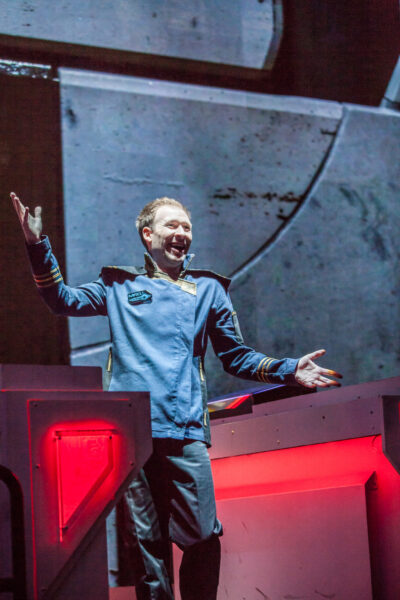
Huge thanks to Brian for taking the time to talk to us and sharing some great “behind-the-curtain” insight! Photo Courtesy of California’s Great America
C101: I’m certainly a big fan of it. The live action really makes the ride stand out from similar attractions. Thanks so much for sharing some insight into the role and the ride Brian. I definitely have a few new things to keep an eye on next time I ride it!
Another huge thank you to Brian Miller for taking the time to talk to us and give us some of the behind the scenes secrets of Mass Effect: New Earth. Mass Effect is just entering its third season at California’s Great America this year, and still going strong. For a great look at the effects side of the Mass Effect, this article from InPark Magazine is an excellent read.
Great America is now open for the season, and there’s a lot of exciting stuff going on at it this year. For more on the park, check out their official site, and read our off-season tour report to learn more about some of the projects they have going on.
Let us know in the comments if you’ve ever noticed any of secrets Brian mentioned. And, if there are other attractions or amusement park roles you’d like us to go behind-the-scenes on, ask away in the comments, hit us up on Facebook or Twitter, or contact us!

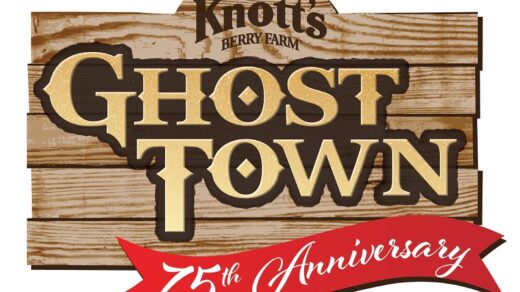

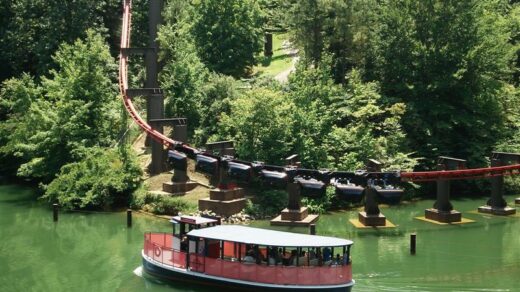











Great ride and experience! As the company who designed and installed the “smoke” co2 special effects system, this was a fun project indeed, and the experience was even better after complete!